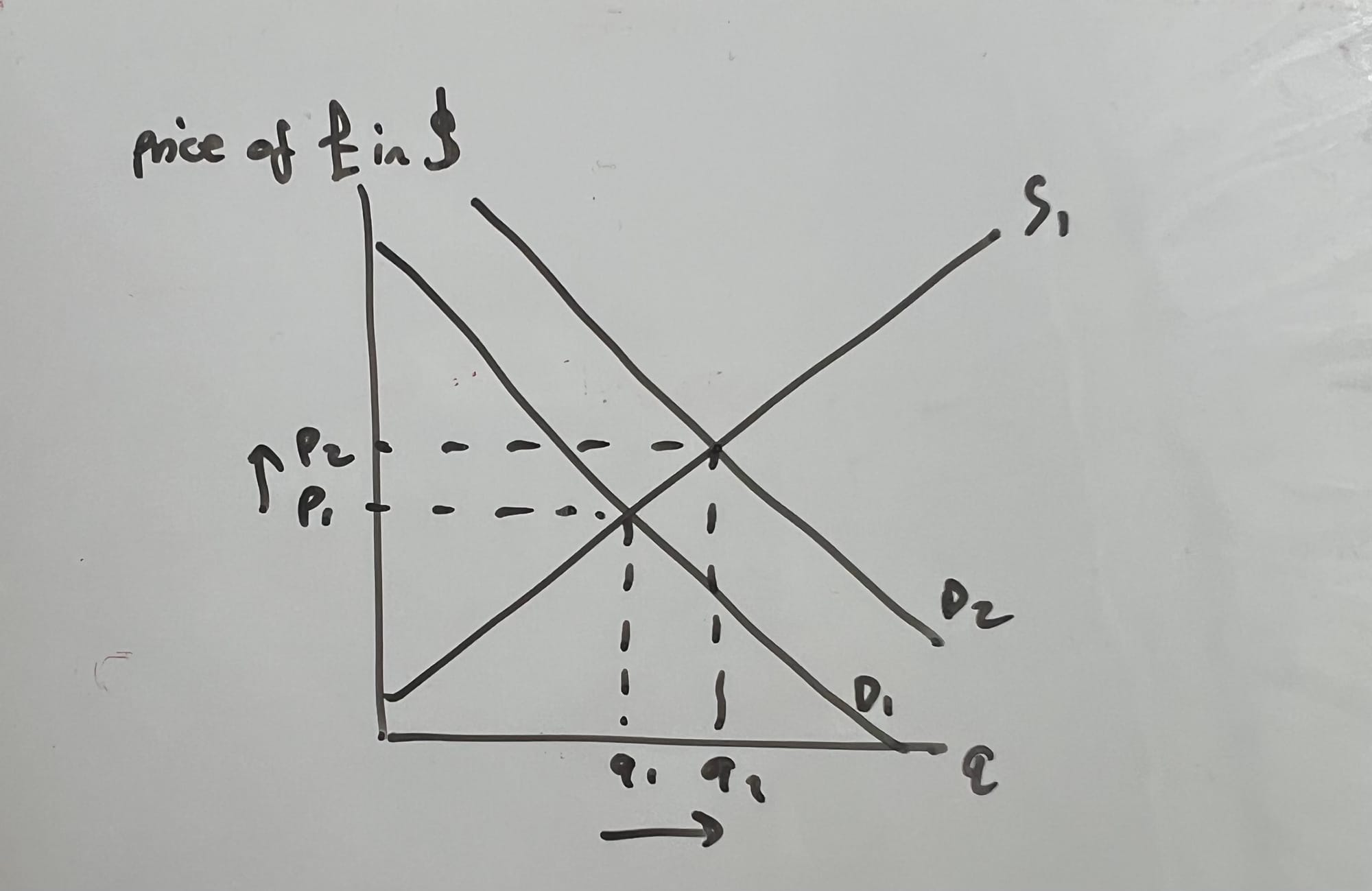Exchange rates are the price of one currency in terms of another. Three factors that can cause a currency to appreciate are an increase in exports, a decrease in imports, and an increase in interest rates.
Exports are the money that enters the economy when UK goods and services are sold to consumers from another country. In order for someone to buy a UK export, they must first buy pounds. Therefore, if the demand for exports increases, more demand for the pound is derived. If the demand curve for the pound shifts to the right, that would lead to an increase in the price (and value) of the pound, from p1 to p2, as shown in the diagram below.

Similarly, if there is a decrease in demand for imports, this would cause an appreciation of the pound. Imports are when goods and services are bought into the UK and money leaves the UK. It is a leakage from the circular flow of income. In order to buy an import, we must sell the pound and buy the required foreign currency, and then buy the import the good or service. Therefore, if there is lower demand for imports, there would also be a lower supply of the pound. A left shift in supply of the pound would lead to an increase in price from p1 to p2.

Thirdly, an increase in interest rates can cause the pound to appreciate. Interest rates represent the reward for saving. If interest rates increase, wealthy investors will be more incentivised to save money in the UK compared to in other economies. There will be a movement of money into the UK and an increase in demand for the pound. This is known as hot money flows. A right shift in demand then causes the price of the pound to increase from p1 to p2.